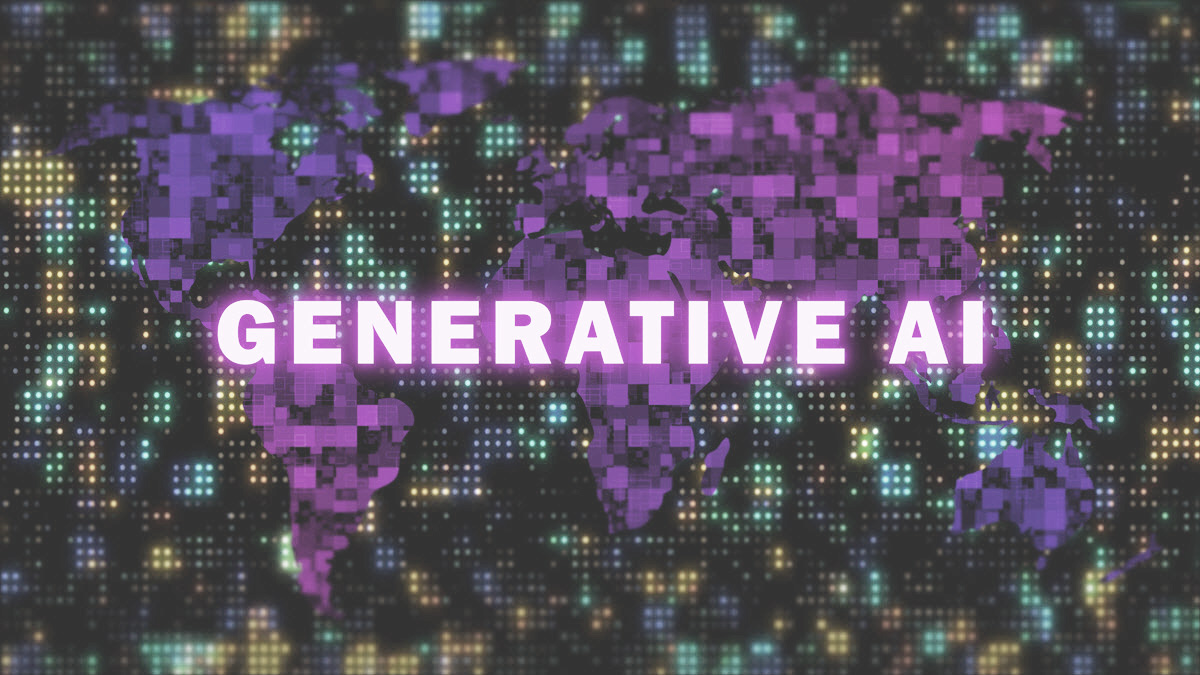
The buzz surrounding the potential of generative AI has permeated every industry since its inception, and the insurance sector is no exception.
With capabilities such as creating human-like responses and generating insightful outputs, generative AI technologies have brought forth a unique blend of opportunities and challenges for organizations.
From streamlining various business operations, like content creation, to spurring debates about its potential impact on employment, generative AI has firmly embedded itself into the strategic discourse. Paul Carroll, editor at Insurance Thought Leadership, emphasized in his May 2023 commentary, “Generative AI: Coming Faster Than You Think,” that a balanced perspective on the short-term and long-term implications of these technologies is vital for shaping future business paradigms in the insurance industry. He writes, “The rule of thumb about breakthrough technologies is that they’re overestimated in the short term but underestimated in the long term.”
Understanding generative AI necessitates a look beyond its surface-level capabilities. It is pivotal to comprehend that these models do not “think” autonomously; rather, their outputs mirror the quality of their training data and the effectiveness of human-generated prompts. Therefore, there is and will be a constant need for a human-machine loop to exist and work together.
Generative AI, particularly through large language models (LLMs), can generate coherent and seemingly intuitive responses to user queries. This is achieved by training on vast datasets, understanding grammatical structures and learning word sequences, which enable it to predict forthcoming words in a sentence and familiarize themselves with industry-specific terminologies.
Generative AI introduces transformative capabilities to the insurance industry, offering innovative solutions across various verticals including customer service, risk management, product development, claim processing and marketing. It enables the creation of sophisticated, personalized customer experiences through intelligent communication.
This enhanced responsiveness to human input is widely considered to be one of the most significant advantages of generative AI. Rather than reinventing the wheel each time a new communication or document is needed, these technologies can draw from an insurer’s entire library of archived communications in a matter of seconds, generating a strong initial draft that can then be refined by a human author. Despite its myriad applications, it is imperative to navigate the implementation of generative AI with a keen emphasis on ethical use, regulatory adherence and data security.
To the general consumer, selecting the right insurance product can be a confusing, stressful activity. Insurers must take great care with their communications to ensure they are easily understood to reduce related stress and improve customer experiences. Under times of great distress, even more care needs to be taken. When a denial of claim or coverage is required, using distinctly negative language, such as the words “no,” “illness,” “poverty” and “death,” have been shown to release stress hormones in the brain of the person reading it. These stress chemicals impair judgment and can reduce reading comprehension by up to four school grade levels, further compounding the challenges faced by consumers when communications are not clear. Generative AI can step in to support the process of rewriting content in plain language or to align to a targeted reading level, which is important given that half the U.S. population reads at or below an eighth-grade reading level.
Generative AI, by leveraging natural language processing (NLP) for sentiment analysis, can help adjust the emotional tone of communications, ensuring that even negative messages are conveyed in a manner that is as receptive as possible.
Navigating through the intricate pathways of generative AI, particularly in the context of the highly regulated and nuanced insurance sector, brings forth several challenges that can be significantly mitigated by aligning with a skilled technology partner. The deployment and management of generative AI entail not only a deep understanding of the technology itself, but also an awareness of the regulatory, ethical and data security nuances associated with its application in specific use-cases within the insurance domain. A proficient AI technology partner, with a wealth of expertise and experience across varied implementations, can deftly navigate through these complexities, ensuring the AI applications are compliant, secure and effectively tailored to meet specific organizational objectives.
Moreover, the insurance landscape is characterized by dynamic shifts influenced by regulatory changes, market trends and evolving customer expectations. Engaging with an adept AI partner ensures the generative AI applications are not only attuned to the current needs of the organization, but are also scalable and adaptable to accommodate future evolution. The partner can facilitate continuous learning and adaptation of the AI models, ensuring they evolve in tandem with shifting trends and regulatory norms, thereby securing a sustainable and forward-looking AI strategy. Implementing AI is not a one-off project, but a continuous journey of learning and adaptation. By aligning with a knowledgeable partner, insurance organizations can embark on this journey, ensuring their AI investments are future-proof, adaptive and consistently aligned with their strategic objectives and operational needs.

The emergence of OpenAI’s ChatGPT and GPT-4, Google’s Bard, and other generative AI tools have dominated headlines in…
Read the article